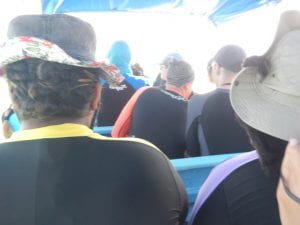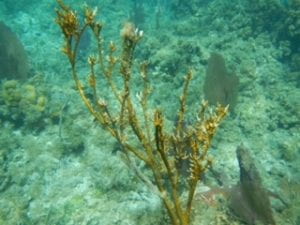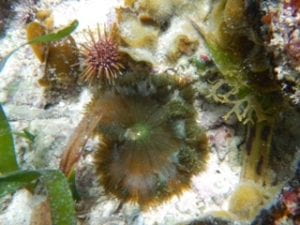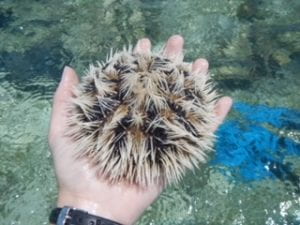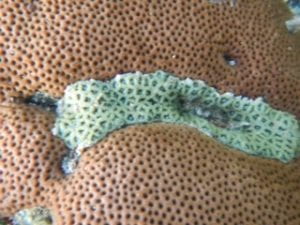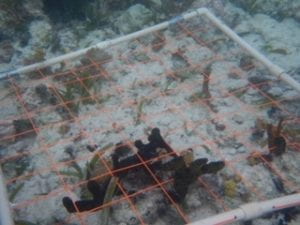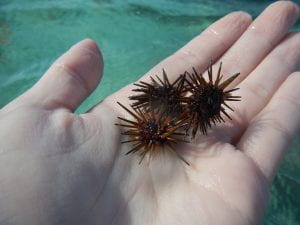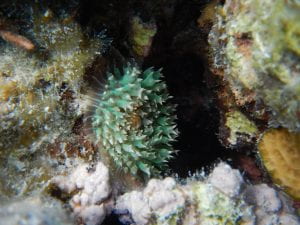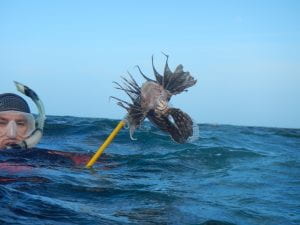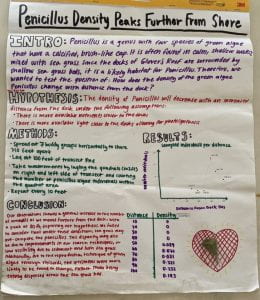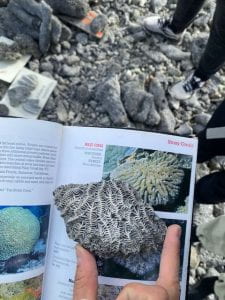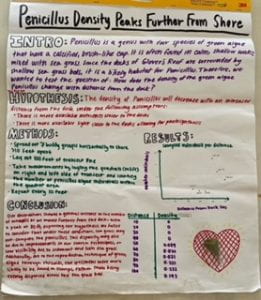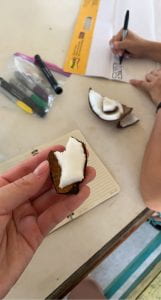Today is the day that my hand, neck, and snorkel mask tans are so defined that they are becoming obvious. We started the day fast and strong TFB-style by hopping into a boat to collect more data for our coral/urchin experiment in two different MPA patch reefs.
The first MPA reef we went to had the best conditions for data collection by far for me and Liliana. The depth (5-6 ft) was perfect, the current was light, and the non-outrageous amount of sea fans helped tremendously with the quadrats. However, I did encounter a challenge at this location. When I was floating and writing on my clipboard, I drifted into a !!*FIRE CORAL*!! It brushed against my elbows and forearms and caused a burning sting. It wasn’t unbearable and went away after 30 minutes, but I have learned to always be on the watch for these vengeful creatures.
^ This is the culprit coral 🙁
The second MPA location was a little more shallow, so this made data collection harder, but the urchin collection led to so many cool finds. One of which was a new taxa discovery! When turning river pieces of coral rubble in search of urchins, I found a red beaded anemone! I was so excited to find a new anemone, and I got a picture of it (the urchin next to it was shortly collected).
I also got to hold a West Indian sea egg! This hedgehog of the sea was named Sally, and she was very adorable and spiny.
Later in the day, we went on a swim just for fun on the lagoon side of the reef crest. This was anemone haven! I saw so many Giant Caribbean anemones; sadly, some of them were bleached. On a happier note, I also got a new taxa sighting here! Encrusted on the side of a mound coral, I found a mat zoanthid colony! The tiny polyps (<1cm) were blue/green and curled up into domes when disturbed. Yay zoanthids!
After dinner, we listened to two guest lectures from the Belize Fisheries Department and Belize Coast Guard. I have so much respect for all that is being done to protect and conserve the ocean and its resources.
Today was extremely productive to the point where I am struggling to finish writing this blog. I look forward to going to bed and having my recurring dream (only started a few days ago for some reason) of going snorkeling and turning into a mermaid. Maybe my dream behind-the-scenes is super inspired by mermaid Ruth!
– McKenna

